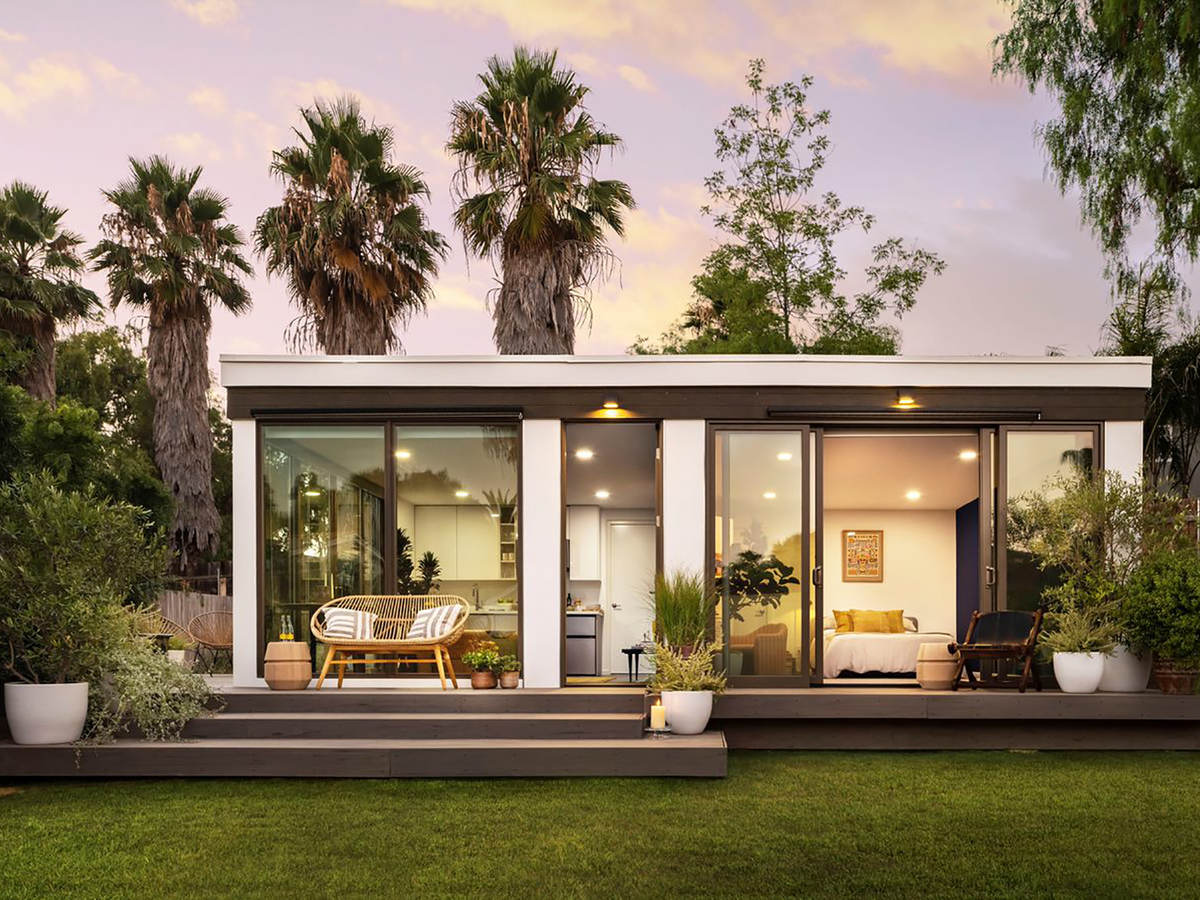When a new technology appears, safety must be a top concern even where government regulations may lag. Novel materials need to be tested to meet rigorous safety standards as well as conform to manufacturer performance expectations. Given our long history in safety testing and certification, we often develop Standards or testing regimes that help customers evaluate their products for safety and compliance. For Mighty Buildings, the first company evaluated for compliance with UL 3401, Outline of Investigation for 3D Printed Building Construction, our experience proved crucial for confirming the product safety and performance of its novel construction method.
UL 3401 is used to evaluate and confirm that a fabricator’s 3D printing equipment, material and fabrication process consistently produces building elements that maintain the same integrity as the initially tested samples. In recent years, additive manufacturing (AM), also known as 3D printing, has quickly become a go-to manufacturing process for a wide range of industries. Because 3D printing is only several decades old, quality can vary widely. Our plastics programs are globally recognized for safety, performance and quality verification. Building construction is moving quickly into 3D printing, where architects, developers and contractors are looking for sustainable, customizable building materials. As more building structures began to be developed using 3D printing, we began examining safety, durability and code compliance factors. This research ultimately formed the basis for the 3D building construction evaluation methodology documented in UL 3401, Outline of Investigation for 3D Printed Building Construction.
For Mighty Buildings, the process began by working with UL Solutions in the initial stages of developing UL 3401. Mighty Buildings is an Oakland, California-based construction technology company focused on creating affordable and sustainable homes using 3D printing, robotics and automation. Sam Ruben, Mighty Building’s Chief Sustainability Officer and Co-Founder, was drawn to our unique combination of over 100 years of experience in building safety combined with our leadership in evaluating additive manufacturing safety, including having some of the world’s leading AM experts. According to Ruben, 3D printing in construction is so new, government regulations do not yet cover these new materials. Simultaneously, any materials, new or old, must meet existing regulations as determined by code authorities. During the development of UL 3401, UL Solutions worked with building authorities to obtain their input on the evaluation program’s scope.
For Ruben and the rest of the Mighty Buildings team, it was crucial to build on trust. By nature, the construction industry is conservative, so our rigorous adherence to safety and code compliance is an important factor in confirming the safety of new construction methods and materials. Being evaluated by UL Solutions for compliance with UL 3401, companies can provide code authorities with evaluations and test results that can be used to demonstrate how 3D printed construction complies with fire, building envelope, indoor air quality, and other building code requirements. Because the company is based in California, 3D printed structures must meet exceptionally stringent building code requirements. Meeting California’s regulations and International Code Council building and residential code requirements form a strong basis for achieving national and international acceptance by building officials.
As Mighty Buildings and others look to build sustainable homes that have a positive impact on housing affordability, 3D printing holds exciting potential to quickly and efficiently produce housing that fits in today’s world. With trust in science and data, UL 3401 seeks to help facilitate the adoption of 3D printing and inspire confidence that the technology remains as safe as traditional manufacturing.
Build Trust in 3D Manufactured Buildings with UL 3401
How can code authorities gain trust in 3D printed structures to ensure they are safe, code compliant, durable, and can withstand the elements for their anticipated lifetime?
Evaluation of 3D Printed Building Construction. Coming Soon?
For many, the concept of 3D printing of physical objects, also referred to as additive manufacturing, may seem like something years into the future. Guess what? It’s here now and small desktop 3D printers are available from online retailers for less than $200 USD.
3D Printed Buildings and UL 3401
3D printing is now being used to construct full-sized, fully functional houses, offices, and other buildings. As the industry gears up for a rapid expansion, guidance is needed to ensure that these structures are safe.
Get in touch
Have questions, need specifics? Let's get this conversation started.

